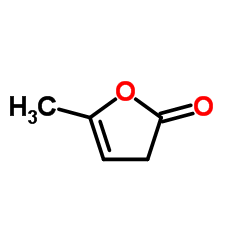Effect of butylated hydroxyanisole, alpha-angelica lactone, and beta-naphthoflavone on benzo(alpha)pyrene:DNA adduct formation in vivo in the forestomach, lung, and liver of mice.
Y M Ioannou, A G Wilson, M W Anderson
Index: Cancer Res. 42(4) , 1199-204, (1982)
Full Text: HTML
Abstract
The effects of alpha-angelica lactone (alpha-AL), butylated hydroxyanisole (BHA), and beta-naphthoflavone (beta-NF) on the amount of benzo(alpha)pyrene (BP) metabolite:DNA adducts formed in the forestomach, lung, and liver of ICR/Ha mice were investigated 48 hr after p.o. administration of BP. BP was administered to mice in amounts known to result in BP-induced neoplasia in certain tissues. Analysis of deoxyribonucleosides by high-pressure liquid chromatography showed that several BP metabolite:DNA adducts were formed in each tissue examined. The major identified adduct in each tissue cochromatographed with the (+/-)-7 beta,8 alpha-dihydroxy-9 alpha,10 alpha-epoxy-7,8,9,10-tetrahydrobenzo(alpha)pyrene (BPDEI):deoxyguanosine adduct. The (+/-)-7 beta,8 alpha-dihydroxy-9 beta,10 beta-epoxy-7,8,9,10-tetrahydrobenzo(alpha)pyrene (BPDEII):deoxyguanosine adduct was detected in each of the tissues. As a percentage of total DNA-associated radioactivity, the BPDEI:DNA and BPDEII:DNA adducts accounted for 14% in the forestomach, 39% in the lung, and 3% in the liver. Another adduct, possibly derived from BP:phenol(s), was detected in lung and liver. Early eluting unidentified DNA-associated radioactivity was also present in each of the tissues and accounted for the majority of the radioactivity (88%) in forestomach, 57% in lung, 97% in liver). Although total DNA-associated radioactivity in liver was approximately 15-fold higher than in lung and 5-fold higher than in forestomach, the specific activities of the BPDEI:adducts and of the BPDEII:adducts were approximately the same in these organs. Addition of alpha-AL or BHA to the diet inhibited BPDEI:DNA adduct formation in the forestomach and liver but not in the lung. The effect of beta-NF was not tissue specific; this aryl hydrocarbon hydroxylase inducer decreased markedly (80 to 90%) BPDEI:DNA adduct formation in all three tissues. The radioactivity associated with the early eluting peaks was also reduced when associated with the early eluting peaks was also reduced when alpha-AL, BHA, or beta-NF was fed to the mice. The inhibition of BPDEI:DNA and BPDEII:DNA adduct formation by alpha-AL, BHA, and beta-NF is discussed in relation to similar studies where these compounds inhibited BP-induced neoplasia.
Related Compounds
| Structure | Name/CAS No. | Molecular Formula | Articles |
|---|---|---|---|
 |
Alpha-Angelica lactone
CAS:591-12-8 |
C5H6O2 |
|
Characterization of the PON1 active site using modeling simu...
2008-01-01 [Bioorg. Med. Chem. 16 , 7504-9, (2008)] |
|
Enhancement of rat hepatic and gastrointestinal glutathione ...
1995-03-01 [Carcinogenesis 16(3) , 607-12, (1995)] |
|
Catalytic asymmetric vinylogous Mannich-type (AVM) reaction ...
2011-06-17 [Org. Lett. 13(12) , 3056-9, (2011)] |
|
Asymmetric assembly of 2-oxindole and α-angelica lactone uni...
2012-02-28 [Chem. Commun. (Camb.) 48(18) , 2439-41, (2012)] |